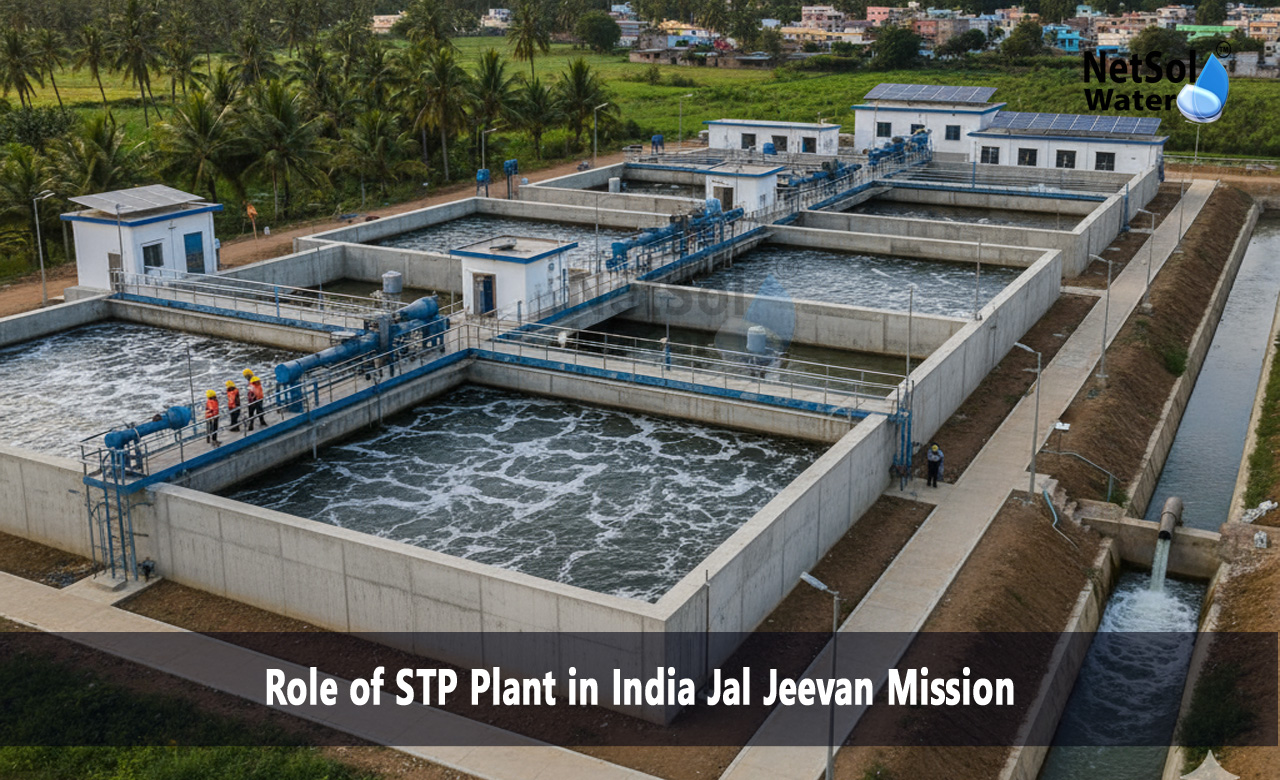What is the Role of STP Plant in India's Jal Jeevan Mission?
The Government of India's Jal Jeevan Mission (JJM) has the vision to provide safe and adequate drinking water to all of the rural households. Even though the mission has been concentrated on clean water supply, it is equally essential to treat wastewater so that water sources are not polluted.
And it is here that Sewage Treatment Plants enter the scene. The role of STPs in India’s Jal Jeevan Mission has become important because untreated sewage holds a potential power to contaminate rivers, lakes, and ground water—the same sources from which drinking water is drawn.
By treating waste water and making it reusable, STPs prevent freshwater from getting harmed and water sources from getting destroyed and interrupted in their natural fresh condition.
Why STPs are Important for Jal Jeevan Mission?
Success in JJM doesn't just come in the way of supplying clean water but also as a means to protecting already existing water bodies from getting contaminated. STPs do this in the following ways:
Prevention of Water Source Pollution
Untreated sewage is one of the major causes of river and lake pollution. It is purified and treated in STPs and then discharged, rendering natural water sources potable.
Enabling Reuse and Recycling of Water
Water utilized for irrigation, landscaping, and industry is recycled sewage water. Water is conserved, with more clean water still available for consumption.
Reducing Health Hazards
Pure water reduces the incidence of diseases like cholera, dysentery, and typhoid. By ensuring that sewage is not drained into open water sources, STPs impact public health directly.
Providing Sustainability Goals
Jal Jeevan Mission provides long-term security of water. STPs ensure that when fresh water is being supplied, wastewater is treated with the same intensity so that the cycle of water remains balanced.
Key Functions of STPs under JJM
The role of STPs under India's Jal Jeevan Mission is implemented at all levels of rural and semi-urban water management:
Wastewater Collection and Conveyance
Sewage in most of the villages usually flows into open drains. STPs are planned in a manner that wastewater is treated step by step and is pumped to treatment plants.
Sewage Treatment
STPs treat sewage in primary, secondary, and tertiary treatment processes.
· Primary Treatment: It eliminates grit and solids.
· Secondary Treatment: Destroys organic matter in the presence of microorganisms.
· Tertiary Treatment: Further purifies water to destroy pathogens, and the water is reusable.
Reuse and Safe Disposal
The reused water is utilized for agricultural purposes or released innocently into surrounding water bodies without any kind of harm to the environment.
Sludge Management
Sludge from an STP may be utilized for biogas or manure making, and this results in a practice of circular economy.
Technologies Utilized in STPs Under JJM
To be cost-effective and environmentally friendly in the rural and semi-urban setting, so that the treatment process is effective, the following technologies are widely utilized:
· Moving Bed Biofilm Reactor (MBBR): Specially adapted to decentralized systems with minimal space.
· Sequencing Batch Reactor (SBR): Durable and adaptable to fluctuating flow rates of wastewater.
· Constructed Wetlands: Low-energy, no-maintenance ecotechnology.
· Anaerobic Digesters: preferred from the generation aspect of biogas from sewage sludge.
Such technologies make it possible to use STPs in small-town regions under Jal Jeevan Mission as well.
Impact of STPs on Jal Jeevan Mission Goals
Where STPs are made available under JJM programs, they have already left a huge impression:
· Improved Quality of Rivers and Lakes Water: STPs remove sewage from water bodies, making them of natural quality and biodiversity.
· Increased Freshwater for Drinking: Wastewater treatment and re-use for non-drinking purposes decrease pressure on freshwater.
· Rural Community Development: Clean water and sanitation improve rural productivity and health, boosting living standards in rural areas.
· Environmental Conservation: Reclaimed wastewater does not allow ecosystems to get polluted with soil and groundwater.
Scaling Issues of STPs under JJM
Save for a few problems, though very important, scaling up STPs to rural regions under Jal Jeevan Mission is:
· High Initial Capital: Funding STP infrastructure can be limiting.
· Operational and Maintenance: Trained personnel would otherwise be required for the functioning of STPs.
· AWARENESS: Rural communities must be educated about the importance of treating wastewater.
· Space Constraints: Land for STPs sometimes is limited.
Overcoming such constraints is the future to harnessing the potential of STPs in India's Jal Jeevan Mission.
Future Prospects
While India paves the path towards the achievement of Jal Jeevan Mission's objectives, STPs will become increasingly important. Adopting decentralized STPs, low-energy treatment technologies, and public-private partnerships will further boost wastewater management.
Government encouragement and public acceptance will make treated water an input of preference for industry and agriculture, independent of natural water sources.
Conclusion
The role of STPs in India’s Jal Jeevan Mission is more than sewage treatment—mission is giving safe water to future generations. Prevention of pollution, water reuse, and rural sustainable development support, STPs are success keys for mission.
This will come in the form of investment in successful STPs and public awareness for taking wastewater as seriously as it will come in the form of laying pipes of water supply so that it can thrive to make India have full access to safe drinking water.
Do you need an advice or assistance on selecting the best water and waste water treatment unit? We have solutions for all your problems!
Let us know your problem, our experts will make sure that it goes away.
For an assistance or related query,
Call on +91-9650608473 Or write us at enquiry@netsolwater.com



